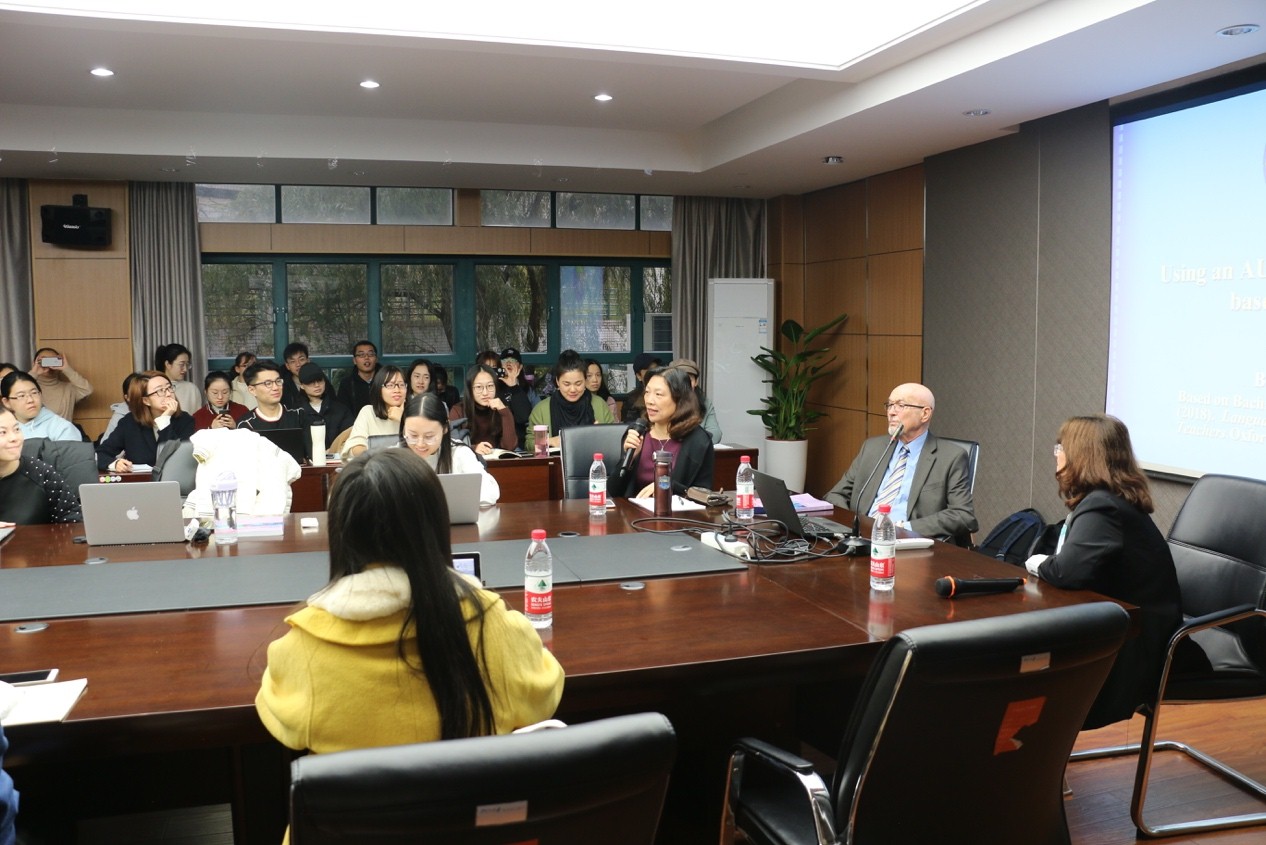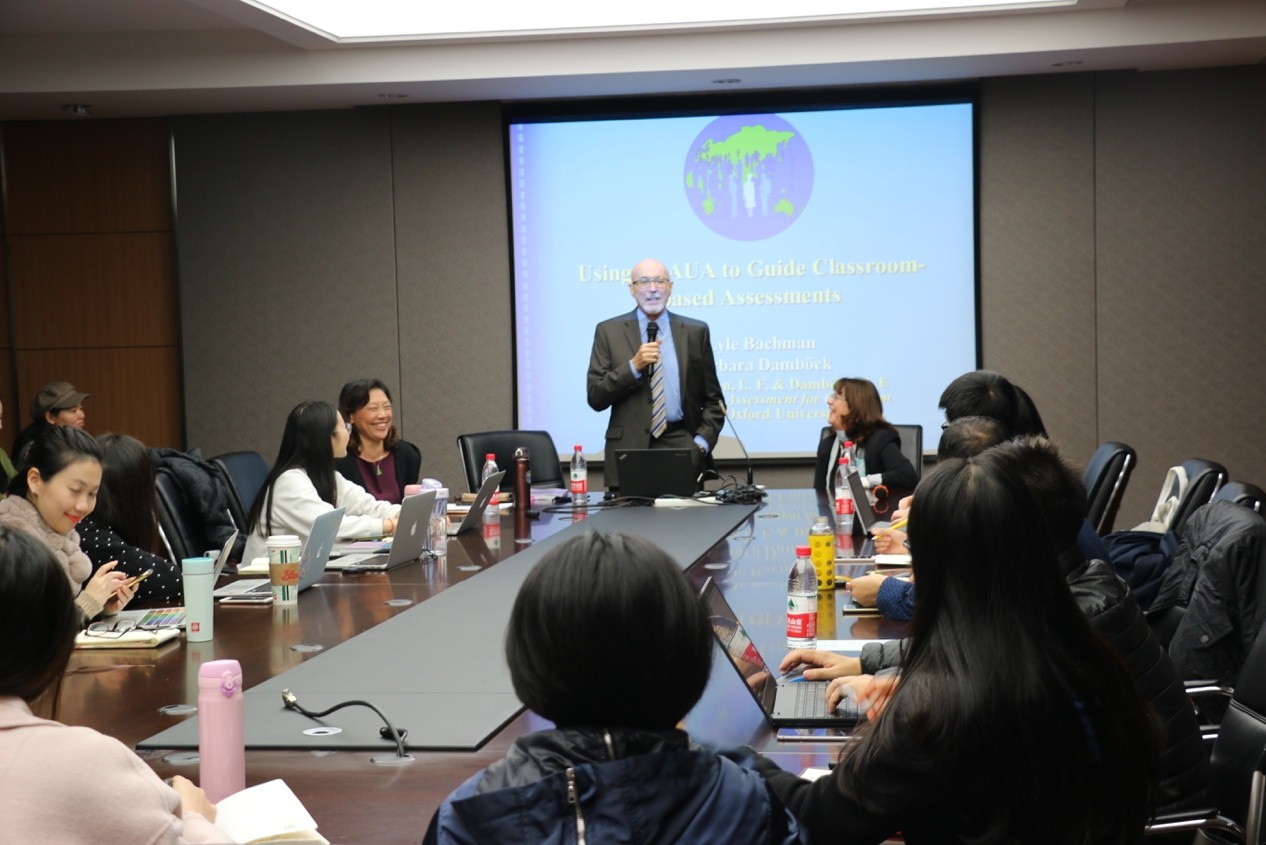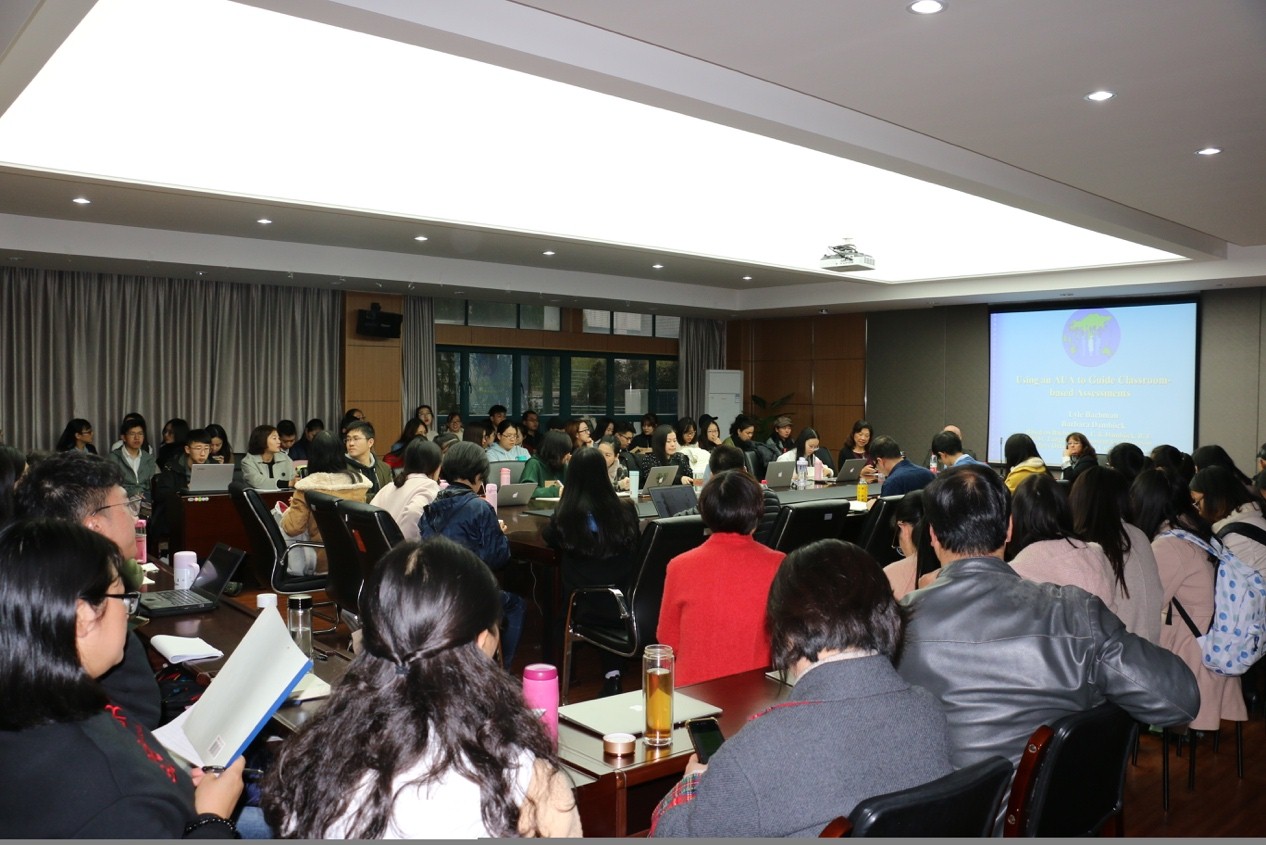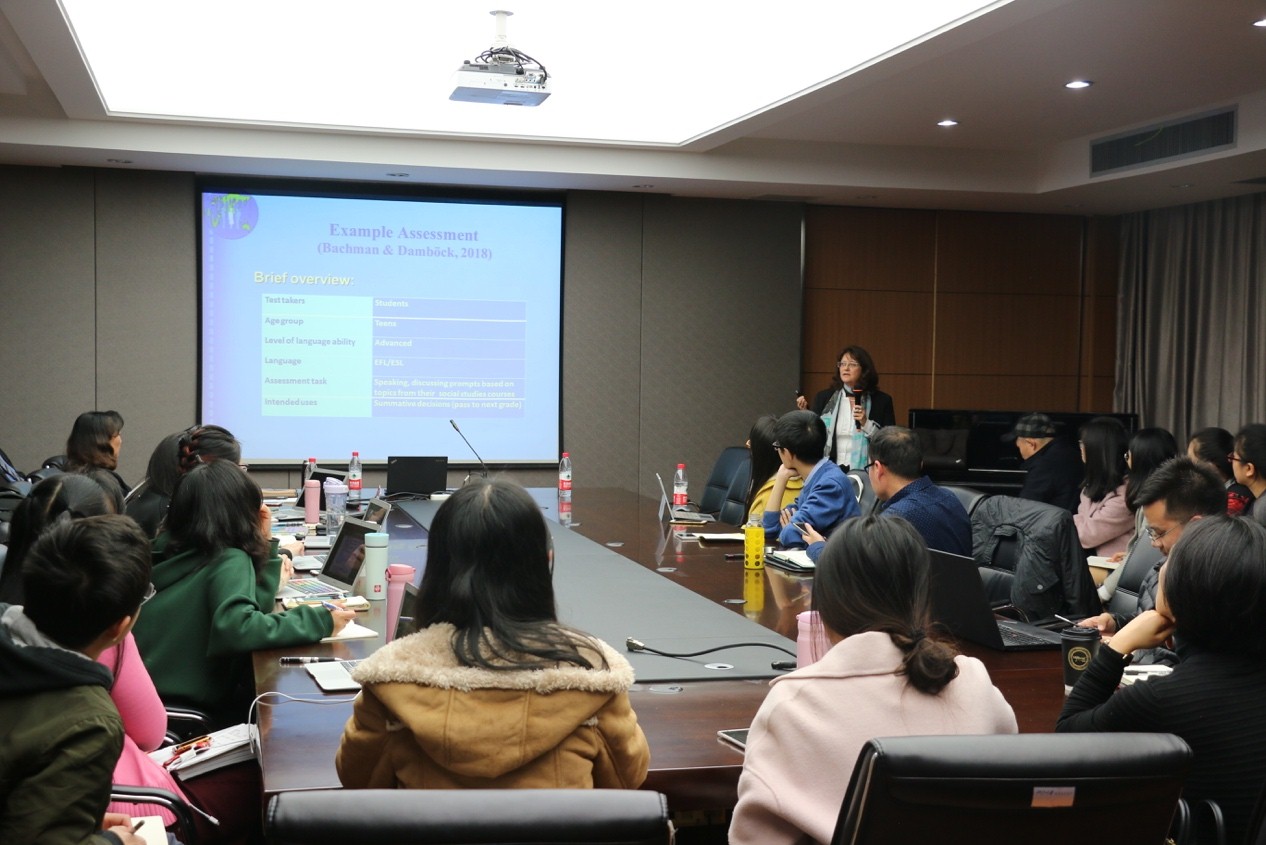On the afternoon of December 4, 2018, Lyle F. Bachman, tenure professor of Applied Linguistics from the University of California, Los Angeles (UCLA), and Prof. BarbaraE. Damböck from the Teacher Training Academy in Dillingen, Germany delivered a lecture on “A New Approach to Classroom-based Language Assessment” at the invitation of School of International Studies (SIS). The lecture was hosted by Prof. He Lianzhen from Zhejiang University in Room 201, Building East 5.

At the beginning, Prof. Bachman gave a brief introduction to the research background and related core concepts of classroom assessment as well as the definition of “classroom-based language assessment”. In order to make the role of assessment in language teaching and learning understood, he then emphasized the difference between teaching and assessment from the perspective of “why teach” and “why assess”. A series of decisions need to be made by teachers in classroom assessments, including formative decisions and final decisions, which can be further divided into low-risk and high-risk decisions. After interpreting the contents of these decisions, Prof. Bachman described the process of classroom-based language assessments and the respective responsibilities of its developers and users as well as how to prove its rationality and fairness with the application of “Assessment Use Argument (AUA)”.

After the first half of the lecture, students and teachers had a warm interaction with Prof. Bachman on the fairness of tests and responsibilities of test developers.

In the second half of the lecture, Prof. Damböck showed how teachers can articulate the AUA for their classroom assessments with concrete examples from Language Assessment for Classroom Teachers. She held that this method is a further development of the AUA proposed by Bachman and Palmer in 2010, which lays a theoretical basis for the development of classroom assessments. According to Prof. Damböck, the design of classroom assessments should center on four issues. The first is why assess, namely what beneficial impacts can our testing brings to stakeholders. The second is what valuable and fair decisions can be made to enhance these beneficial impacts. The next is how to analyze students’ abilities through testing results, and the analysis should be sufficient, meaningful, unbiased, generalizable and relevant to the decisions made. The last, what kind of testing performance record is the most appropriate as it calls for consistency. The four claims of the AUA provide targeted answers to these four questions. What’s more, Prof. Damböck illustrated the process of designing and developing classroom assessments and assessment task templates as well as how these templates can be used to create multiple assessment tasks.

In this lecture, Prof. Bachman and Prof. Damböck introduced the AUA and the core concepts of testing, and on this basis clearly explained the design and development process of new methods of classroom assessments. In the Q&A session, students and teachers had positive interactions with two professors, during which they deepened their understanding of testing and its application in language teaching and learning and benefited a great deal.
Institute of Foreign Linguistics and Applied Linguistics
Written by Zhang Juan and Li Yue
December 6, 2018
Translated by Shang Xiaoyi and Liu Liu
Edited by Xu Xueying



